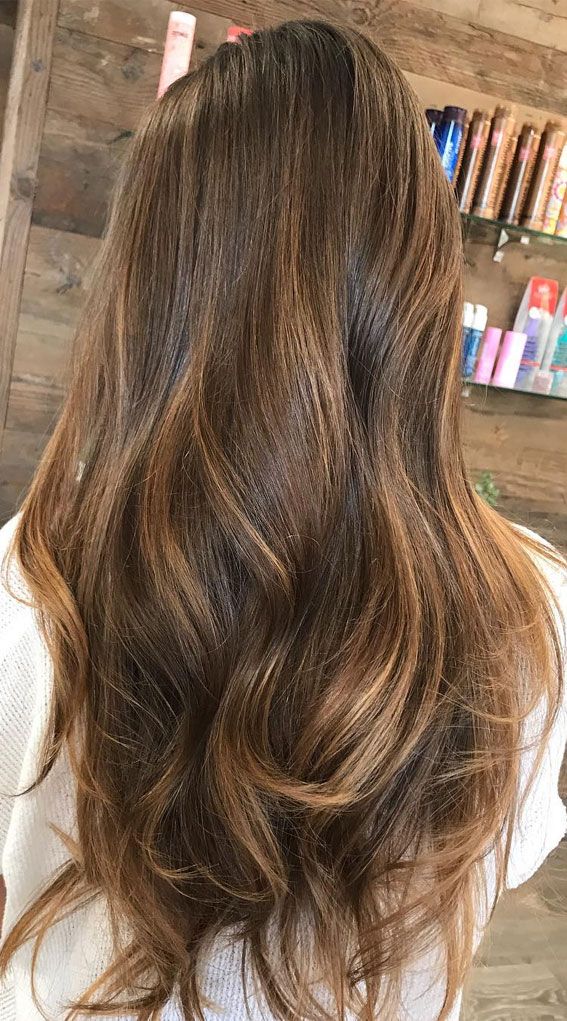The aesthetic allure of brown hair augmented with partial highlights transcends mere fashion; it embodies a rich tapestry of cultural significances and evolutions in beauty standards across disparate societies. This nuanced exploration of hair color serves as a microcosm for examining broader themes of identity, cultural relativism, and the interplay between individual expression and societal expectations.
To embark on this inquiry, one must first dissect the elemental nature of brown hair itself. Often perceived as a common hue, brown hair possesses a versatile charm that can evoke warmth and familiarity. This attribute renders it a foundational element within various cultural contexts. In many societies, brown hair is associated with natural beauty and authenticity. The earthiness of brown symbolizes stability and rootedness. Yet, the addition of highlights introduces a layer of multiplicity. Highlights, especially when applied subtly, allow for a dynamic interplay of light and shadow that enhances the natural texture and depth of the base color. This transformative potential prompts us to consider how beauty norms fluctuate across cultures and seasons.
The practice of adding partial highlights to brown hair may initially seem a modern invention. However, historical perspectives reveal that the manipulation of hair color has long been a prevalent practice, deeply intertwined with cultural rituals and social status. In the ancient world, Egyptians utilized a variety of natural dyes derived from plants and minerals to achieve a sun-kissed aesthetic, akin to the highlights contemporary individuals seek. Such methods were not merely aesthetic decisions; they were emblematic of socio-political stratification, where one’s hair indicated rank and propriety.
Moving into the current era, the fascination with brown hair illuminated by partial highlights continues to resonate across generational lines. This trend showcases a growing appreciation for subtlety over ostentation, reflecting an evolution in aesthetic values towards authenticity and understated elegance. As societies increasingly embrace diversity in hair textures and colors, brown hair with highlights serves as an inclusive canvas. Its appeal lies in the ability to transcend cultural boundaries, offering individuals the opportunity to express their identity uniquely within a shared aesthetic framework.
Moreover, this hair color technique presents a compelling case study in cultural relativism. From the vantage point of cultural relativism, beauty norms are not absolute; they are shaped by historical, social, and environmental contexts. The popularity of brown hair with partial highlights across various cultures invites scholars to ponder whether these choices are born from individual preferences or if they are influenced by globalized beauty ideals propagated through media and technology. For instance, the proliferation of social platforms has created a global tapestry of aesthetic influences, where diverse interpretations of beauty converge. This interconnectedness allows one to witness the diffusion of beauty trends, where a hairstyle transcends its geographical origin, gaining new meanings and adaptations in different locales.
In the context of seasonal changes, brown hair with partial highlights uniquely adapts to the fluidity of environmental shifts. As summer approaches, individuals often gravitate towards lighter highlights that capture the essence of sun-kissed vibrance. In contrast, as autumn descends, deeper, richer tones may become more prominent. This adaptability speaks volumes about the human desire to harmonize with nature’s cycles. Thus, the aesthetics of hair color demonstrate a profound connection between personal expression and the natural world, reifying the concept that beauty can, and perhaps should, transcend eras and environmental contexts.
Furthermore, the philosophical implications of choosing to enhance brown hair with highlights invite contemplation about societal values surrounding beauty. This practice, seemingly innocuous, raises questions about conformity, self-identity, and the pressures exerted by societal norms. While the decision to enhance one’s appearance may reflect a personal choice, it can simultaneously serve as a response to the implicit demand for conformity to prevailing beauty standards. This tension underscores the intricate relationship between individuality and societal expectations—wherein the pursuit of personal expression exists alongside a nuanced understanding of cultural pressures.
Understanding these various perspectives is imperative for appreciating the significance of brown hair with partial highlights. It encourages a shift in perception, allowing one to view hair not merely as a cosmetic feature but as a profound symbol of identity, culture, and personal agency. In recognizing the dual nature of beauty—both personal and societal—it becomes evident that hair is a canvas reflecting a myriad of influences, normativity, and individual choices.
As we traverse the complexities of hair color, particularly brown hair enhanced with highlights, we uncover a wealth of cultural significance that extends beyond aesthetics. This exploration draws attention to the broader dialogue around identity and belonging, encapsulating the intricate interplay of personal choice and cultural influence. Thus, brown hair with partial highlights emerges as more than a fleeting trend; it stands as a testament to our collective narrative, inviting both introspection and curiosity within the realms of identity, culture, and the beauty that intertwines them.
